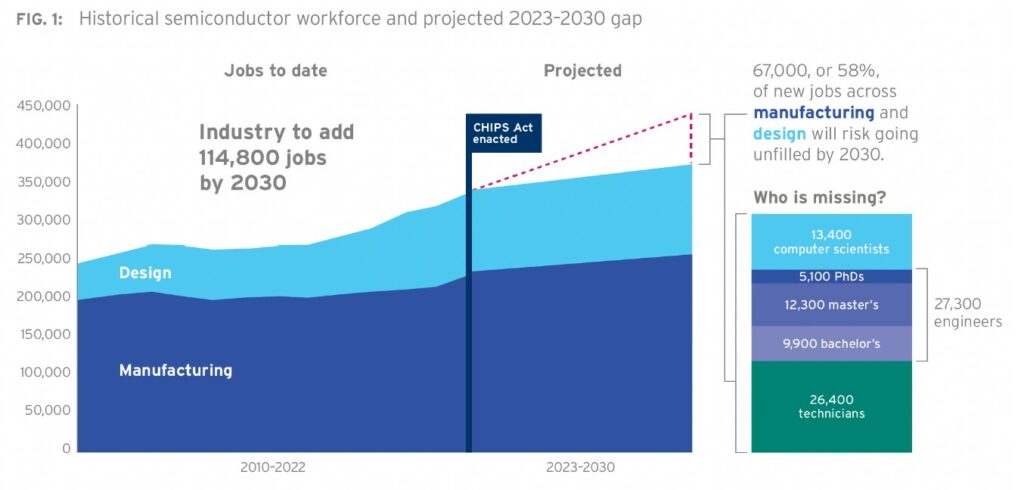The Semiconductor Industry Association (SIA), in collaboration with Oxford Economics, has unveiled a study revealing a pressing shortage of technicians, computer scientists, and engineers in the United States. By 2030, the semiconductor industry is projected to face a shortfall of 67,000 workers, while the broader U.S. economy is expected to experience a gap of 1.4 million such workers. The report, titled “Chipping Away: Assessing and Addressing the Labor Market Gap Facing the U.S. Semiconductor Industry,” also offers policy recommendations to counteract the talent scarcity.
The study emphasizes the crucial role of workers in driving innovation and growth both within the chip industry and the U.S. economy at large. It advocates for collaboration between government and industry to address the talent shortage and capitalize on the potential of semiconductor innovation.
Due to projected increased demand for semiconductors beyond 2030, companies are ramping up production and innovation efforts. The study predicts the U.S. semiconductor industry’s workforce will grow by about 115,000 jobs by the end of the decade, but 67,000 of these roles could remain unfilled if action isn’t taken.

The SIA-Oxford Economics study outlines three key recommendations to bolster the U.S. technical workforce:
- Strengthen support for regional partnerships and programs to cultivate skilled technicians in semiconductor manufacturing and advanced manufacturing sectors.
- Foster the domestic STEM pipeline for engineers and computer scientists crucial to the industry and other vital sectors.
- Retain and attract more international advanced degree students to bolster the U.S. economy.
The report highlights the importance of addressing the shortage across technician, engineering, and computer science roles due to the foundational significance of semiconductors in modern technologies. The U.S. semiconductor industry has long collaborated with educational institutions and organizations to train and employ a diverse and skilled workforce. The study underscores the need for continued efforts alongside the CHIPS Act investments to strengthen the semiconductor workforce.
John Neuffer, SIA President and CEO, stated that the CHIPS and Science Act, along with investments in chip production and innovation, anticipated the necessity to enhance the semiconductor workforce in the U.S. The industry aims to build on existing workforce development initiatives, expand STEM graduate pipelines, and attract top engineering talent from around the world through collaboration with government leaders.






